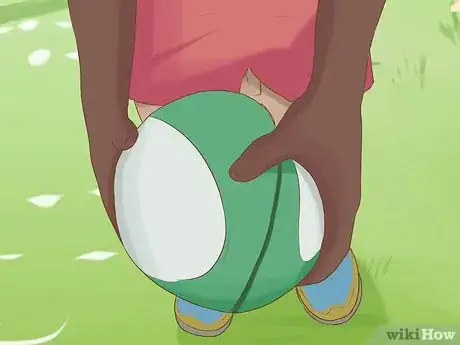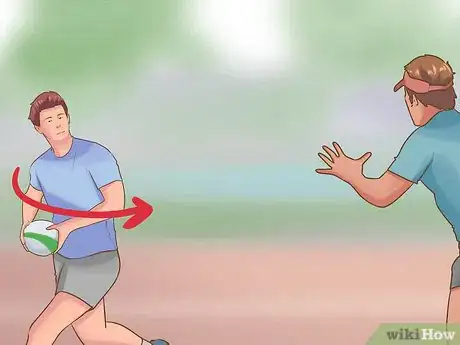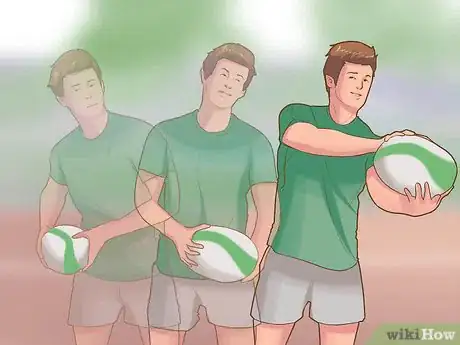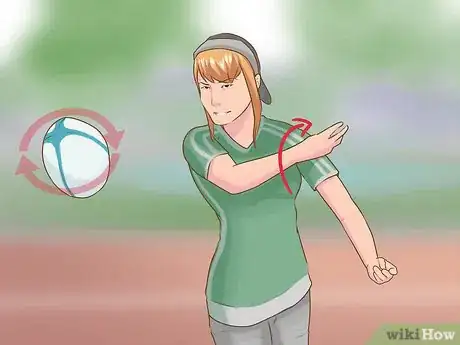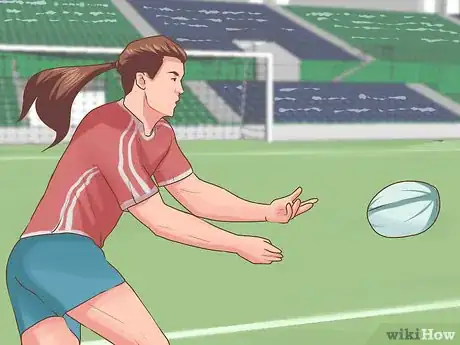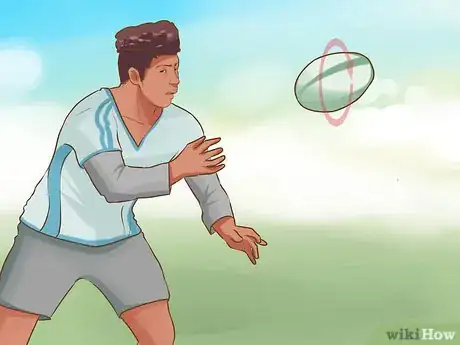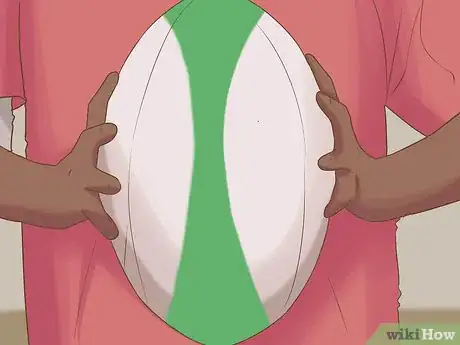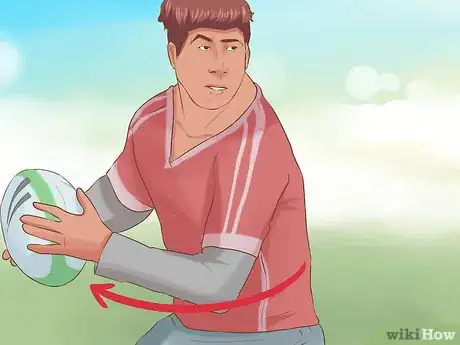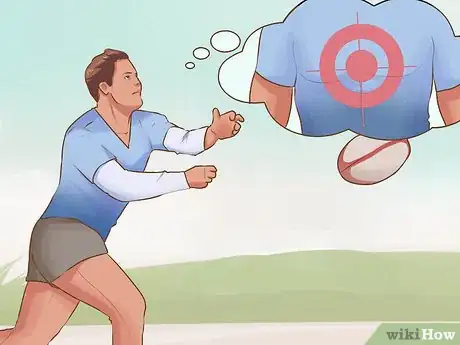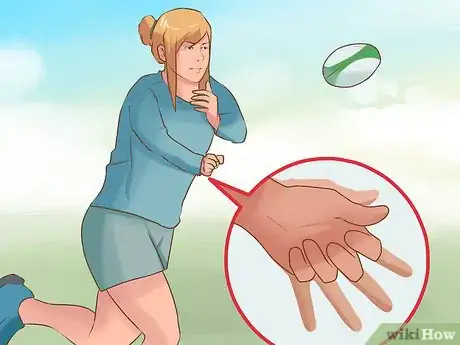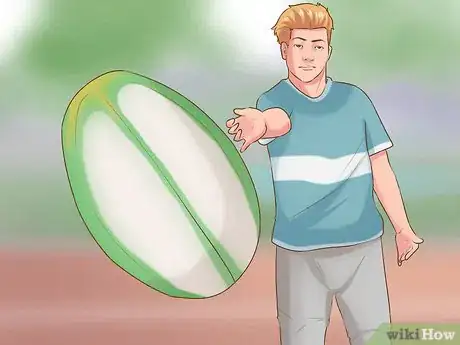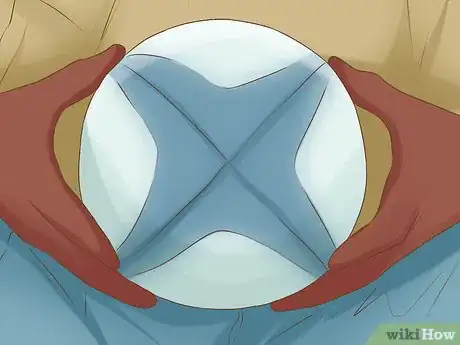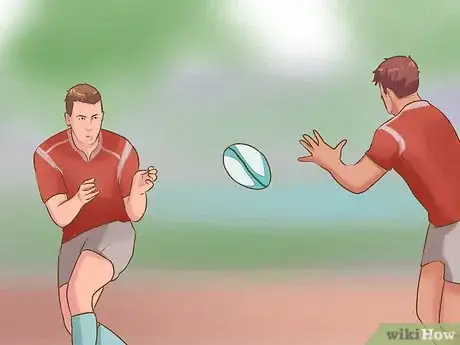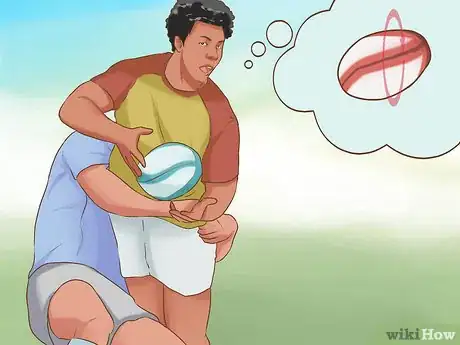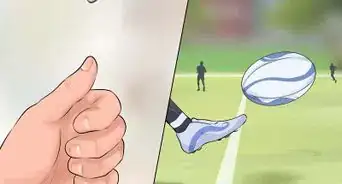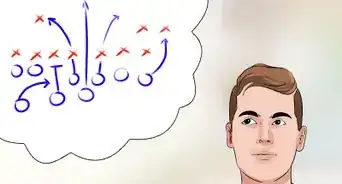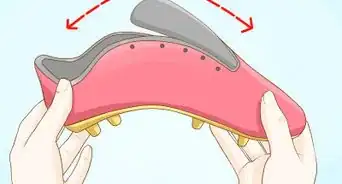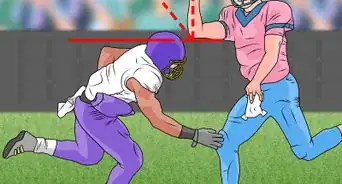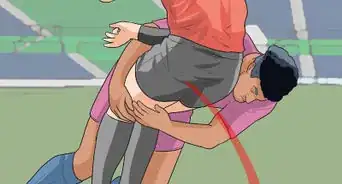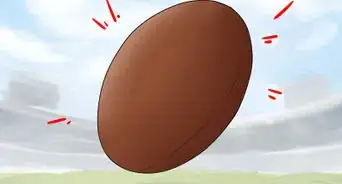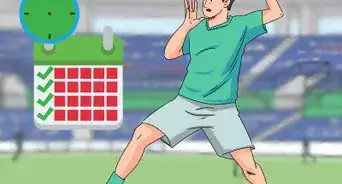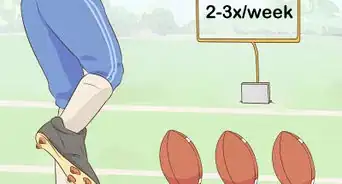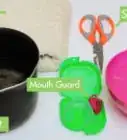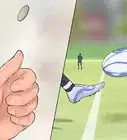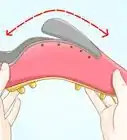X
wikiHow is a “wiki,” similar to Wikipedia, which means that many of our articles are co-written by multiple authors. To create this article, 10 people, some anonymous, worked to edit and improve it over time.
This article has been viewed 59,002 times.
Learn more...
A typical rugby pass is spun beautifully and effortlessly across the field. Spinning the ball doesn't come naturally, but it is an important skill for accuracy, distance, and consistency on your passes. Once you can comfortably throw the ball to a teammate on the move you should work on a great spin pass.
Note: This article is for right-handed players. For left-handed passes, simply flip the instructions.
Steps
Method 1
Method 1 of 3:
Passing with Spiral (Long Passes)
-
1Use long, accurate spirals for big passes. A clean spiral is essential, especially for the scrum and fly-halves. A spiral is the classic, across the body throw, where a player uses their arms and a quick snap of the wrist to quickly launch the ball as far as possible.
- Accuracy is always more important than spin. You should focus on hitting your target before getting the spin right.
- If you're doubtful about your ability to pull off a long throw, take the ball into a tackle. You'll maintain possession of the ball, which is far more valuable than risking a difficult pass.[1]
-
2Place your right hand on the back of the ball. The ball is horizontal in front of you, and your right hand is near the end of the ball. The arc between your thumb and first finger should point at your desired target. The most common pass is a standard throw with your right hand, across the body to your left, and behind you. Remember, a rugby pass can never be thrown forward, so don't practice throwing ahead of you.
- Place your right hand on the top of the ball, then slide it towards the point until just the edge of your palm is touching the end of the ball.
- If you have big hands, move them slightly towards the front of the ball, fingers curled around the sides. You should be able to hold onto the ball with just your right hand, so adjust your hands until this is possible.[2]
Advertisement -
3Place your left hand underneath the ball at the other end. The left hand is a guiding hand, meaning it doesn't have to grip tightly. Simply place it underneath the ball, palm up, so that your thumb is near the left-most point (nose) of the ball.
-
4Pull the ball back to your right hip. While you use your right arm for most of the power on a right-handed throw, you want to get your body as involved as possible for maximum strength. Pull the ball back to your hip, leaving it roughly horizontal as you do.
- Try and keep the ball pointing the right way as you bring it down -- you don't want to try rotating it into the right alignment as you throw it.
-
5Turn your upper body to face the target. With the ball still down at your hips, rotate your shoulders to your teammate. The better your shoulders are squared up to them, the more accurate your throw will be.
- It is often best to practice in a horizontal line. This allows you to focus on throwing sideways, turning your shoulders for each throw while your feet face forward.[3] You should have the leg furthest away from your target leading to help you generate more power.
-
6Toss your arms at the target, keeping the ball low and horizontal. Keep the ball at roughly the same level, roughly hip/belly height, throughout the throwing motion. Your right arm will give most of the power, so focus on pushing from the right on a right-handed throw. Use your left hand to guide the throw to its target.
- Your inside arm will stay relatively in place, elbow slightly bent.
- Your outside arm should curve a bit outside, with the elbow pointing out.[4]
-
7Pull the fingers on your right hand back towards your body. As you finish the throw, slide your right hand down and towards your chest, "pulling" the skin of the ball down and into a spin. This is the hardest part of the motion, but is easy to learn with some practice.
- As you get better you can also snap your left thumb down to put even more spin on the ball.[5]
-
8Follow through with both arms extended at your target. Keep your hands moving until both arms are fully extended. They should point at your target. In general, your left palm will face up from guiding the ball and your right palm will face down from the wrist snap.
Advertisement
Method 2
Method 2 of 3:
Spinning the Ball (Short Passes)
-
1Use gentle spins for short passes and quick pops. Spinning the ball keeps it stable, meaning that your teammates can prepare their hands to grab the ball seamless out of the air instead of trying to manage a wildly flailing or rotating ball. A simple spin pass is one of the quickest ways to move the ball short distances.
- Accuracy is always more important than spin, so make sure you're hitting your target on throws first.[6]
-
2Hold the ball with both hands, nose pointed up. This is a good position whenever you're running in open space, as it gives you lots of options. Focus on using your fingers, not your palms, to grip the ball as much as possible. From this stance, with the ball in front of your body and pointing up, you have lots of options for moves:
- You can spin pass to either side.
- You can drop the ball down to either hip to prepare for a long pass.
- You can tuck the ball into your chest for a tackle.
- You can fake throwing the ball either direction.[7]
-
3Slightly pull the ball to your right ribcage. If you're throwing with your right hand, you'll be pushing the ball to your left. Cock the ball back slightly to get a little extra power by pulling the ball over to your ribcage.
-
4Push the ball to the target, keeping the nose up. You're aiming for your teammate's chest. Push the ball out towards them with your right hand.
-
5Snap your fingers back towards your chest as you release. As the ball, pull your fingers back towards you, as if you were gripping a bar on a subway or train. This puts the spin on the ball. You can also work on snapping your left thumb forward, spinning the ball clockwise as you release.[8]
Advertisement
Method 3
Method 3 of 3:
Improving your Throws
-
1Practice one-handed throws to improve your technique. One of the best ways to start beginners is with one-handed throws. This helps them master their dominant hand motion for a full spiral. Have them grip the ball with their dominate hand, cupping along the side and underneath the ball, towards the back. From there:
- Grip the ball near your hip, holding on to the back half.
- Cock the elbow back, pointing the nose of the ball at your target.
- Snap your arm forward to throw the ball.
- Twist your wrist over and to the left, snapping your fingers to spin the ball out.[9]
-
2Improve your throw with a lighter grip. It may seem counter-intuitive, but a light grip on the ball actually leads to greater power and accuracy. Once you're comfortable with the motion, work on holding the ball only with your fingertips, allowing you to pull on them to get perfect spin.[10]
-
3Try some throwing drills to improve your play. The best way to improve your throw is to practice. While you should always throw back and forth during practice, there are some focused drills that can make your a better thrower over time:
- Quick Hands: From a straight horizontal line with 3-5 players, 3-5 meters apart. Keeping your feet in place, work on throwing the ball down and back across the line as quickly as possible. As you get better, increase the distance.
- Mini-Lines: Get three players and jog down the field with a ball in a line. As soon as you pass it, drop back so that you are behind the player with the ball and they can legally pass it. As soon as you get the ball, sprint ahead 2-3 steps to put your other players in legal throwing position. Keep throwing and moving amongst the three of you the length of the field.
-
4Know when to spin it an when to keep it simple. A spin gives the ball stability, helping to retain speed and accuracy as it moves through the air. This makes it the most reliable throw in your arsenal, but that doesn't mean you should use it every time. Sometimes you shouldn't pass at all, or you should use a simple, unspun "pop" pass instead, such as:
- When you're being tackled. If your arms aren't free, you won't be able to spin it accurately enough for a throw.
- When you're out of space or time. A good throw takes a little time, and your arms cover a wide distance. If a defender can clip one of your arms while throwing your accuracy is going to be way off, and you could cost your team a turnover.
- When making very short passes. The best thing to do here is simply pop the ball up, without spin. This allows the teammate to run through the ball, ideally catching it when it is still barely moving in midair.[11]
Advertisement
Warnings
- Some of the most dangerous hits are when a teammate needs to reach up to catch a ball, exposing their chest and stomach for a big tackle. This is why accuracy is much more important than spinning.⧼thumbs_response⧽
Advertisement
References
- ↑ http://www.betterrugbycoaching.com/Article-1820--1--Rugby-coaching-tips-on-the-pros-and-cons-of-using-the-spin-pass#
- ↑ http://www.rugbyhow.com/spiral-pass-or-spin-pass.html
- ↑ http://rugby.isport.com/rugby-guides/how-to-make-a-spin-pass-in-rugby
- ↑ http://rugby.isport.com/rugby-guides/how-to-make-a-spin-pass-in-rugby
- ↑ http://www.rugbyworld.com/takingpart/mini-rugby/step-by-step-guide-spin-pass-22798
- ↑ http://www.betterrugbycoaching.com/Article-1820--1--Rugby-coaching-tips-on-the-pros-and-cons-of-using-the-spin-pass#
- ↑ http://coaching.worldrugby.org/?module=1§ion=2&subsection=10
- ↑ http://www.rugbyhow.com/spiral-pass-or-spin-pass.html
- ↑ http://www.rugbyworld.com/takingpart/mini-rugby/step-by-step-guide-spin-pass-22798
About This Article
Advertisement


